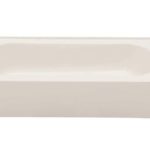In this consumerist world, a water flow restrictor with the faucet in the bathroom and kitchen works perfectly to limit the use of water. A real money-saving deal. Yet, you may want to remove the flow restrictor for cleaning or replacing purposes. This also helps to keep the water flow rate in an optimal state.
So, here’s our tutorial on how to remove the water flow restrictors from bathroom faucets and also from the kitchen faucet. Let’s get to the point without wasting much time.
How To Remove Flow Restrictor From Bathroom Faucet
Depending on which type or model of bathroom faucet you are using, there’re two different types of water flow restrictors. These are –
- Single flow restrictor
- Aerator flow restrictor
At first, we will discuss on how to remove a single flow restrictor, since this is the most commonly found water limiter in the bathroom.
The removal of a single water flow limiter is easier than you can actually think off it. You will only require an adjustable wrench to do it. Connect the wrench with the head of the faucet to twist it. This will loosen the faucet head, making it easy for you to remove the flow restrictor later.
However, the last thing you wouldn’t want is that damaging the faucet finishing with the wrench. So, attach a thick rubber band with the flow restrictor. Now, apply mild pressure with the wrench to loosen the restrictor.
Once loose enough, pull it off with pliers or hand.
Now, let’s take a look at the removal process of the flow restrictor inside the aerator.
As you require to remove the restrictor from the inside of the aerator, you will have to work with a variety of small pieces. These might get lost if you don’t take precautionary measurements. So, use a stopper or a rubber band to block the drain at first ti safeguard all the small pieces.
Now, it’s time to start working with the aerator. For those who haven’t seen an aerator, it is commonly found at the end of a standard faucet. Once you locate the aerator, start unscrewing it. Many people may use their hands to unscrew it. However, we recommend you use an adjustable wrench since an aerator is often stuck with minerals.
Also, use a rubber band on the aerator to keep it unscratched and undamaged. Once you remove the aerator to open up the flow restrictor portion, the rest of the process is pretty straightforward. Likewise, the single flow restrictor removal, follows the same steps.
We have also written about How to Remove A Stripped Screw From A Shower Faucet.
How To Remove A Flow Restrictor From A Kitchen Faucet
Sometimes the water flow rate of the kitchen faucet sinks so poorly that makes even cleaning and washing kitchen utensils sturdy. It is at this point in time; you might think of cleaning the water flow restrictor to get better water flow. Or, you can get rid of the restrictor forever. Either way, you need to know how to remove a flow restrictor from a kitchen faucet inside the aerator.
Use a towel to cover the faucet drain so that you don’t end up losing small components such as screws and nuts. Alternatively, you can use a drain stopper.
Now, move on to the next step. You are free to either use your hand or a standard wrench to remove the aerator. To do so, turn the wrench in a counterclockwise direction. If the aerator is concealed, you will require a unique concealed aerator removal tool to perform the task. You can find it in the nearest plumbing shop and it should cost much.
Once you have successfully removed the aerator, use a screwdriver to disconnect and pry off the flow restrictor from the kitchen faucet.
How To Remove Flow Restrictor From Delta Kitchen Faucet
Delta uses the aerator to safeguard their kitchen sink water flow restrictor. It also intensifies the restriction to the next level. Since Delta kitchen faucets come with the aerator to hide the flow restrictor inside it, you will need to follow the steps mentioned above. More details.
This should be a convenient task for you.
Conclusion
Although a flow restrictor is a handy tool to limit is from the overuse of water, sometimes you can not but remove it to ensure increased flow for different purposes. Thus, this guideline on removing the flow restrictor from the bathroom and kitchen faucet will come in handy for you.
We aspire for convenience at bathroom and kitchen plumbing tasks and hope you are benefitted from these tutorials.
-
Pingback: How to Remove Flow Restrictor From Kitchen Faucet




